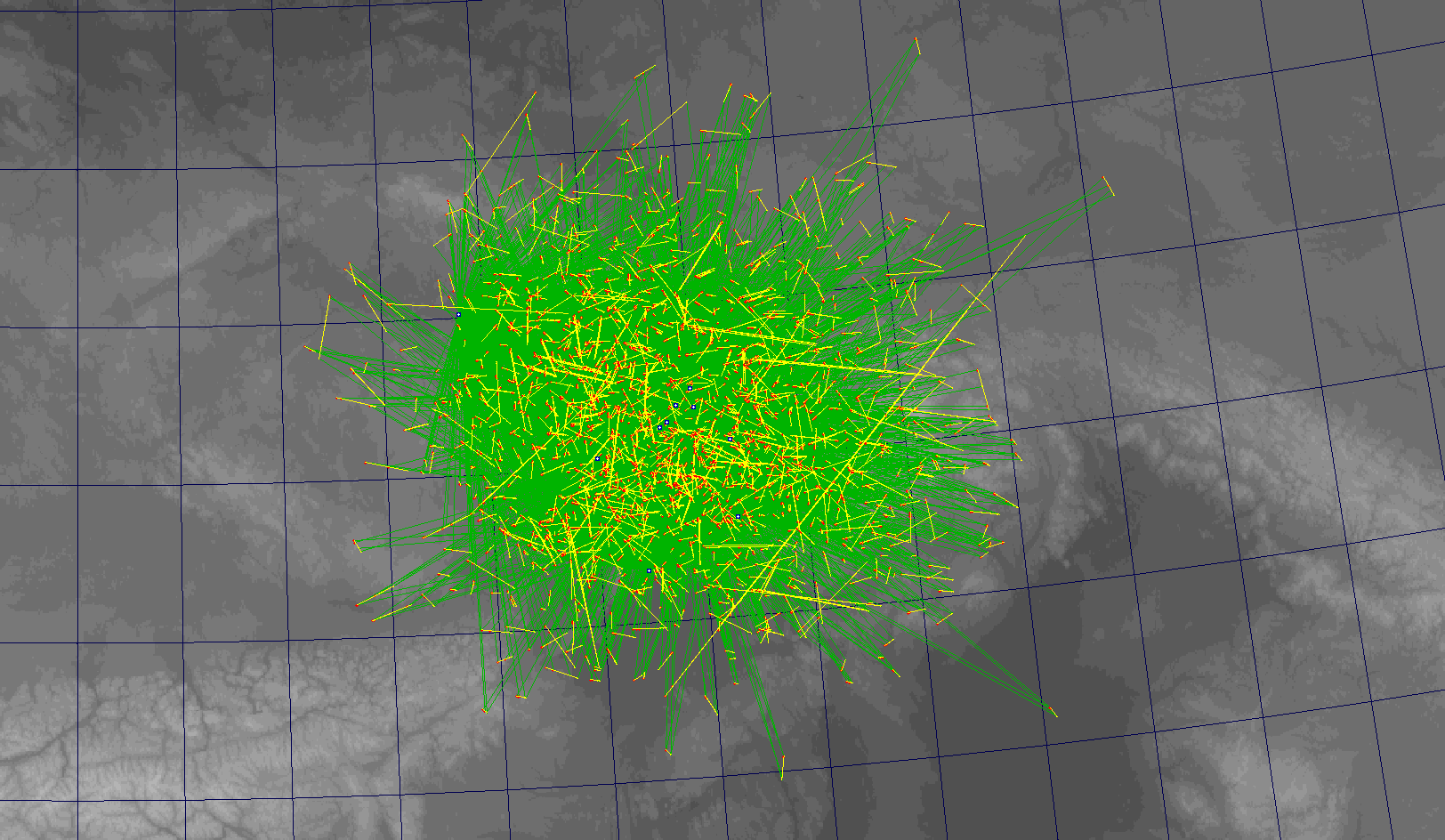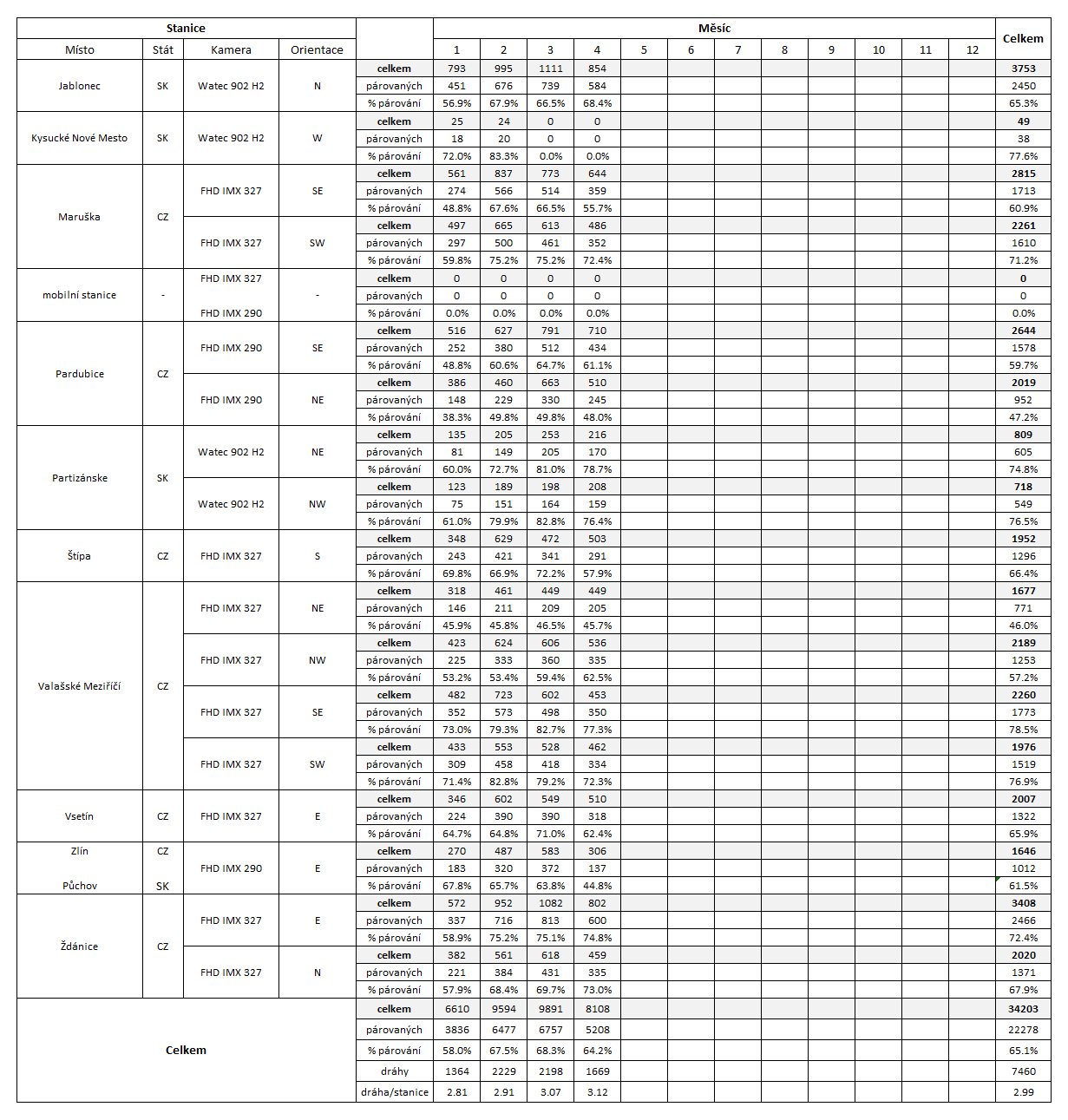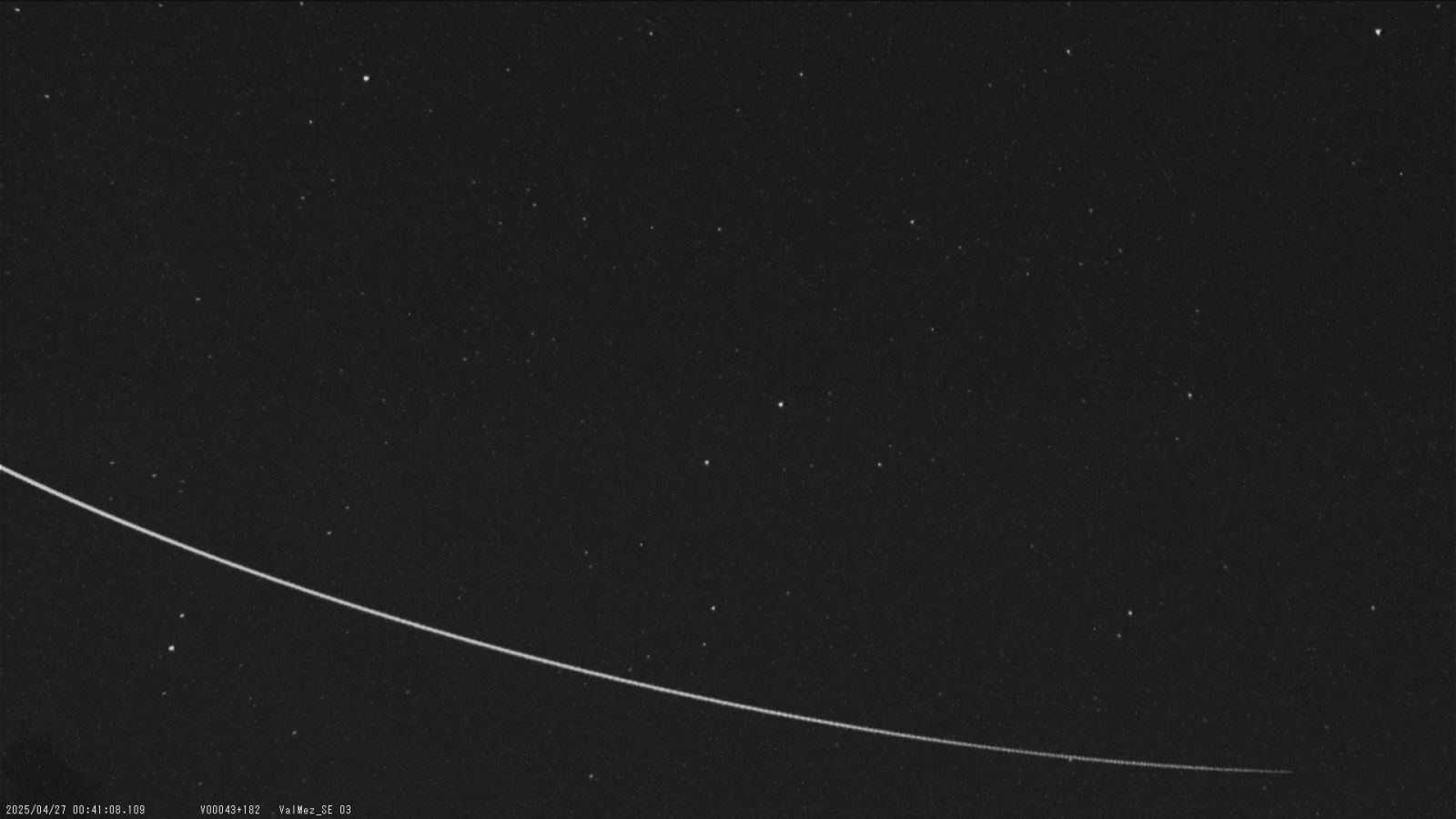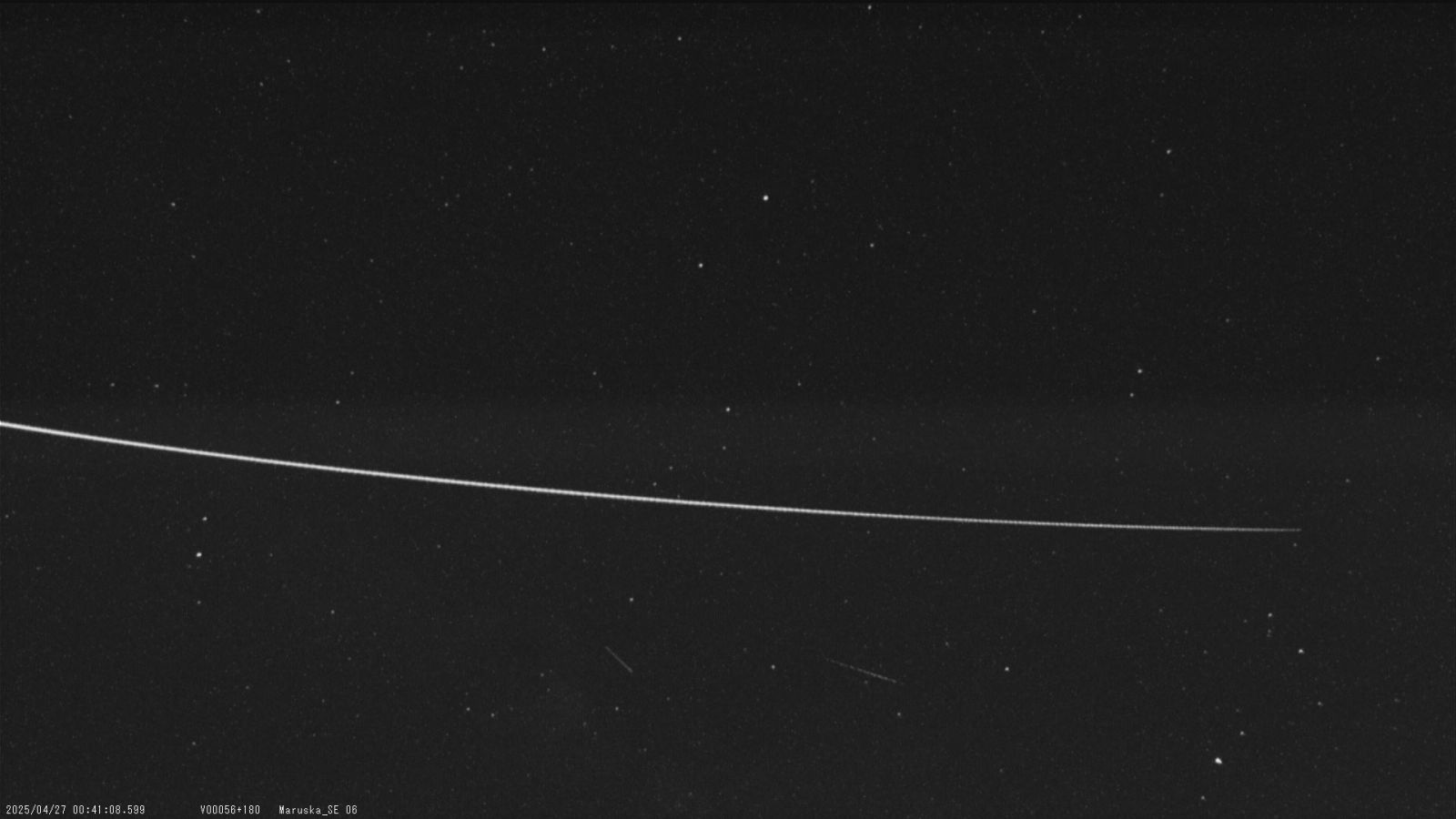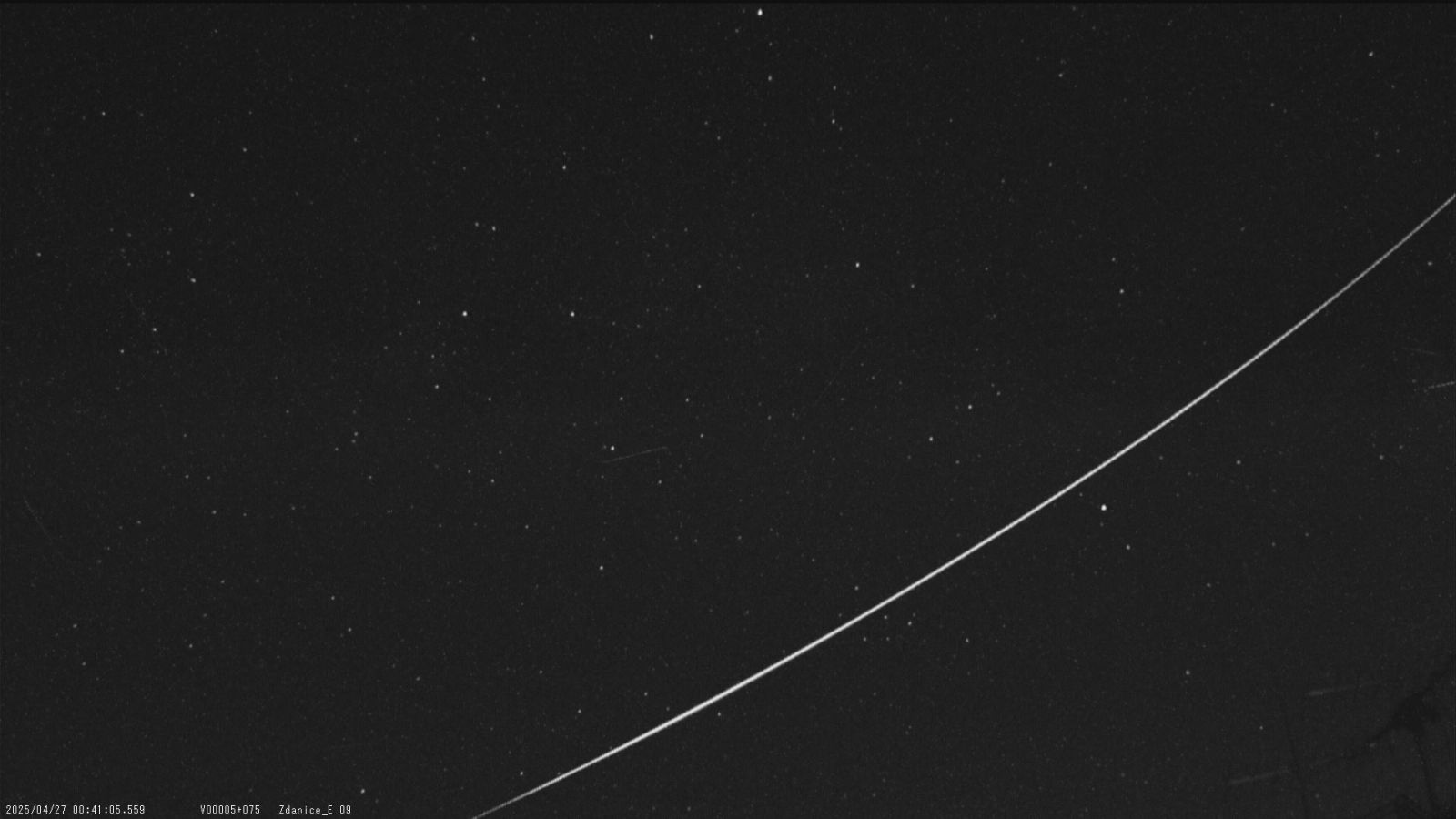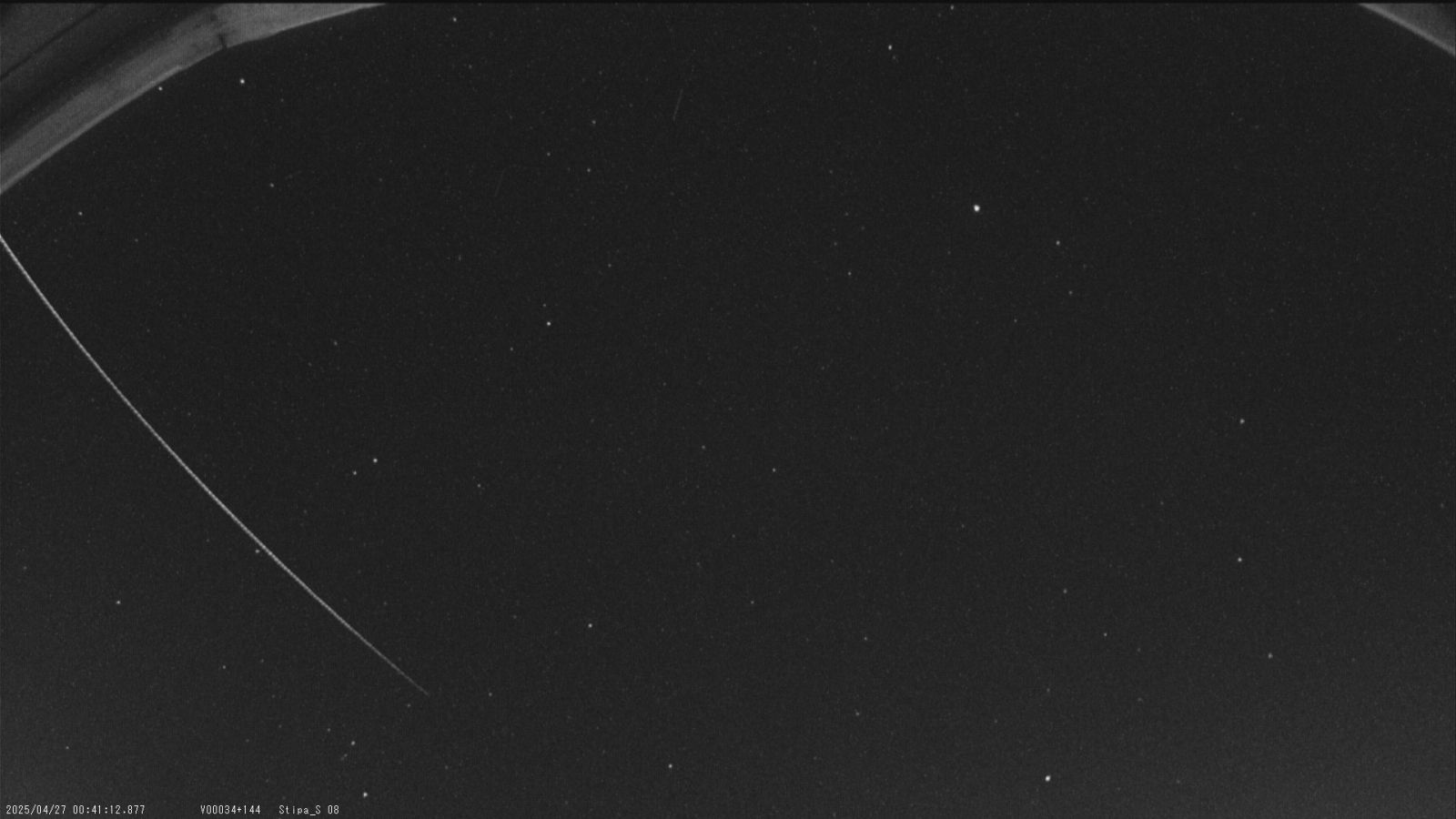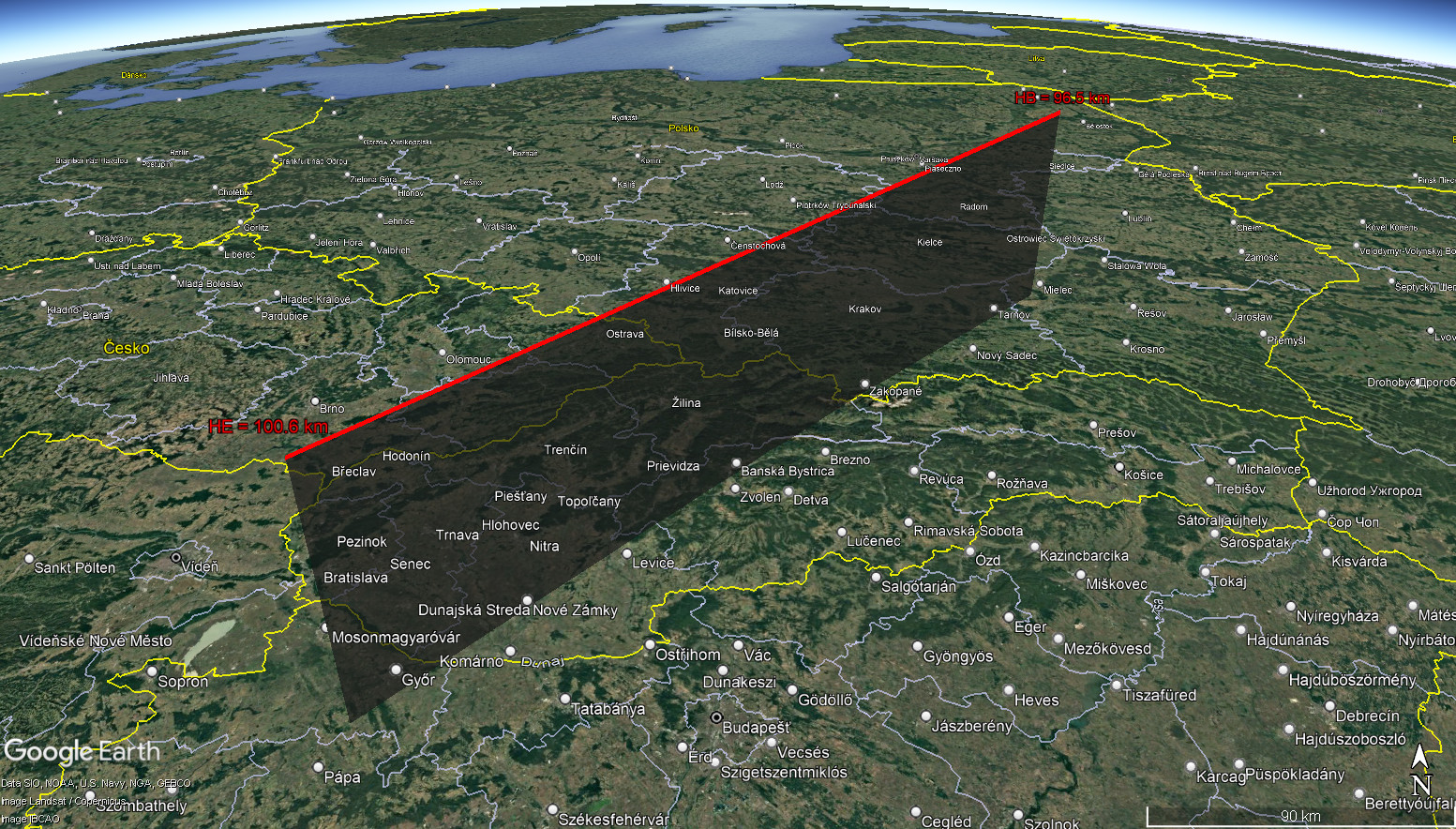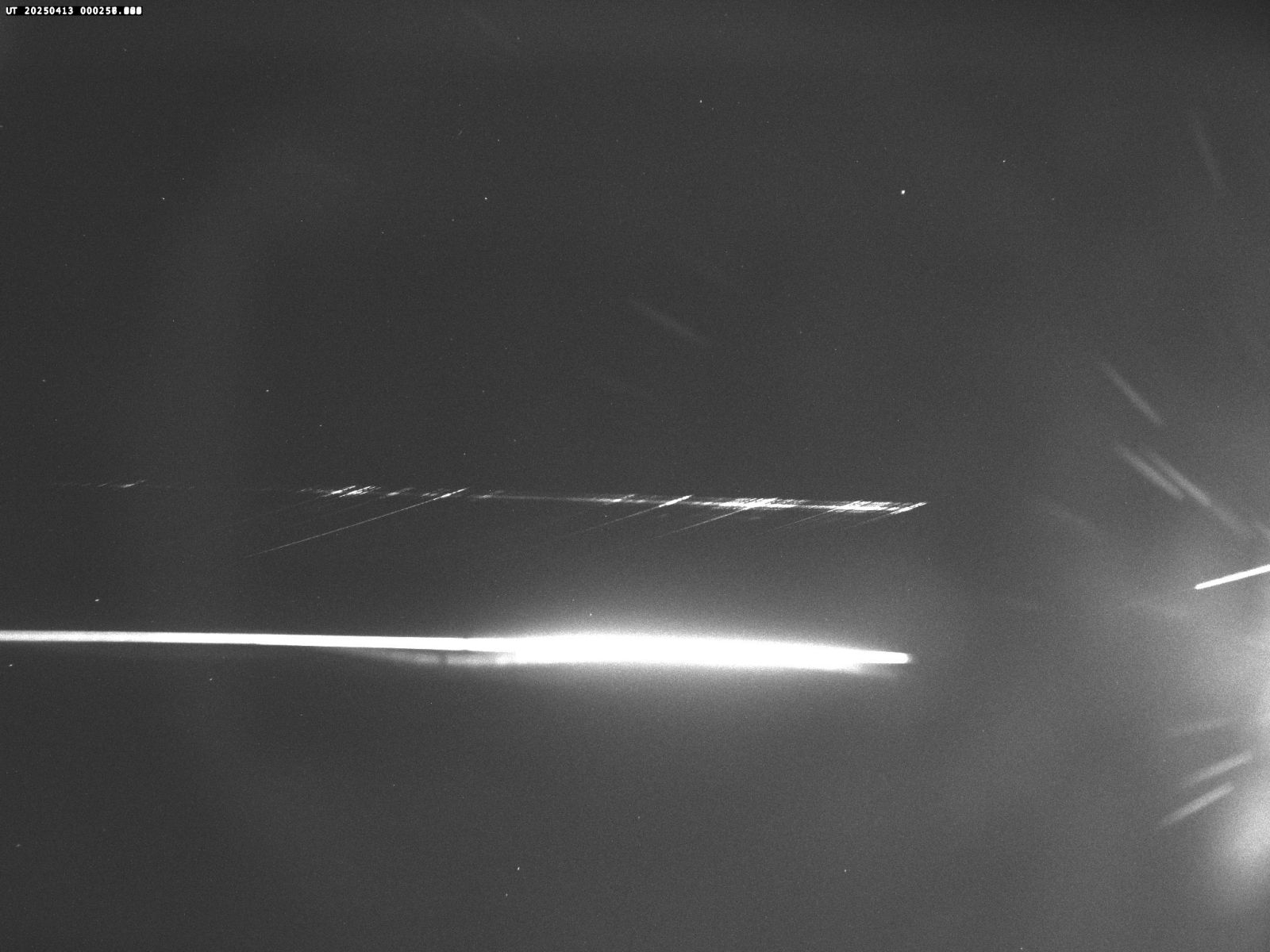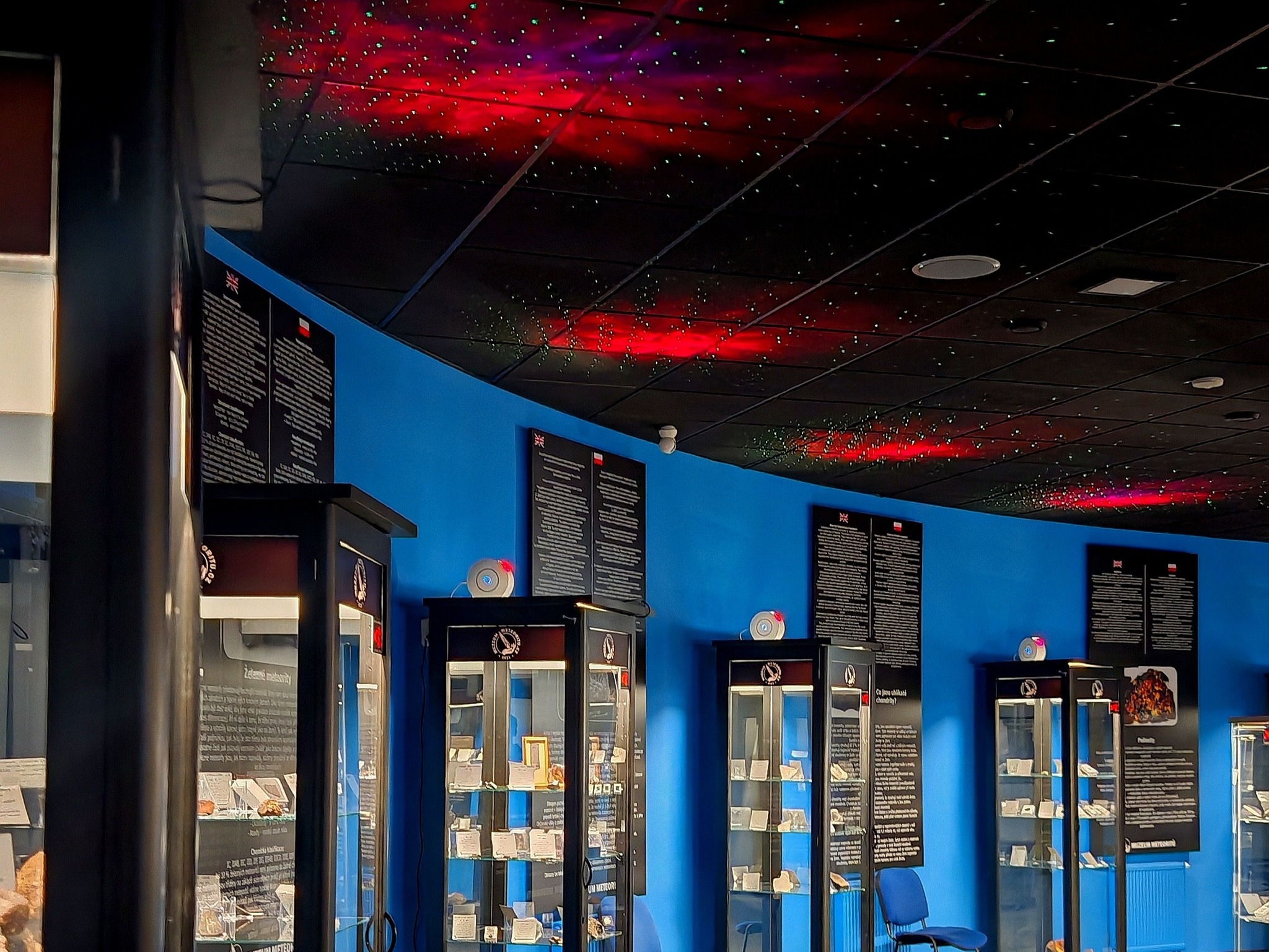Video Observations of Meteors in the CEMeNt Network in March and April 2025
The period of low meteoric activity ends, at least temporarily, at the end of April. During this period, two relatively strong meteor showers are active - the April Lyrids and eta Aquariids. The broad maximum of the eta Aquariids occurs at the beginning of May. Sporadic background activity decreases to its annual minimum, which occurs precisely in March and April. For the remainder of both months, only occasional weak meteor showers are active, mainly from the antihelion source. The maximum of the Lyrid meteor shower in 2025 fell during a period of variable spring weather, yet it was possible to observe a relatively high number of meteors from this shower at the Central European Meteor Network (CEMeNt) stations. Overall, however, the weather during March and April was favorable - in March, at least one meteor was recorded at some network station on 23 nights, and in April also on 23 nights.
The maximum of the Lyrid meteor shower occurred in the morning hours of April 22, 2025. Cameras of the CEMeNt network recorded a total of 155 multi-station Lyrid paths. According to the IMO VMDB ( International Meteor Organization Visual Meteor Database ) visual activity graph, the maximum corrected hourly rate of Lyrids this year reached 8.1 ± 1.4 meteors, with the maximum occurring on April 22, 2025 at 10:34 UT. The activity of the Lyrid meteor shower was therefore below average this year, and overall the number of visual observations of the maximum is very low.
In March 2025, the cameras of the CEMeNt network recorded 9,891 single-station meteors, which combined to form 2,198 multi-station trajectories (Fig. 1, 3). As of today's date, observations from stations on the outer perimeter of the network are not included in the processing - from Rokycany (CZ), Plzeň (CZ), Karlovy Vary (CZ), Blahová (SK) and Zvolenská Slatina (SK), whose processing is not complete.
In April 2025, the cameras of the CEMeNt network recorded 8,108 single-station meteors, which combined to form 1,669 multi-station trajectories (Fig. 2, 3). As of today's date, observations from stations on the outer perimeter of the network are not included in the processing - from Rokycany (CZ), Plzeň (CZ), Karlovy Vary (CZ), Blahová (SK) and Zvolenská Slatina (SK), whose processing is not complete.
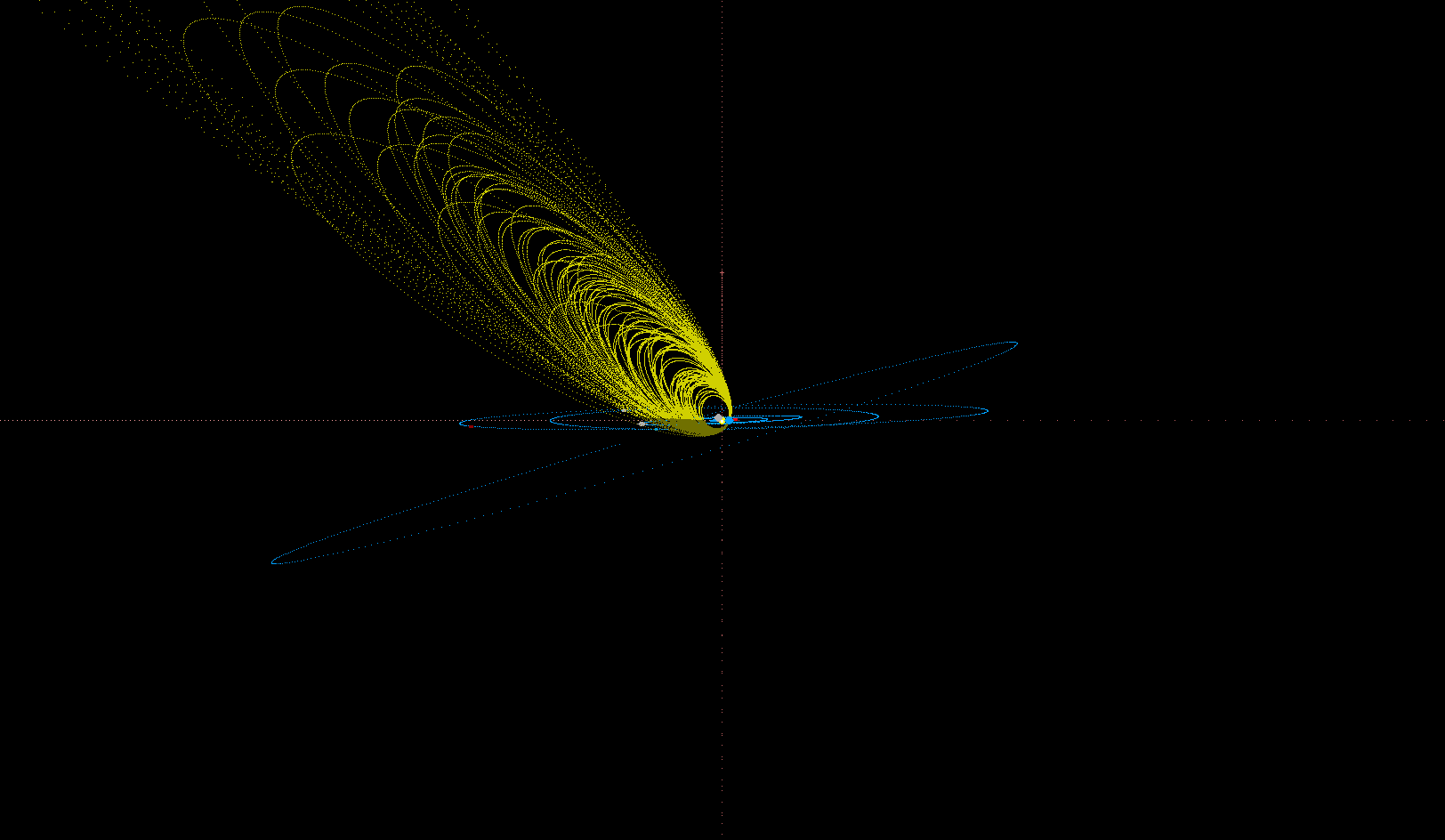
Fig. 4: Projection of multi-station trajectories of meteors belonging to the Lyrid meteor shower (LYR) in the Solar System. A total of 155 multi-station trajectories of the LYR meteor shower were recorded in January 2025. Author: Jakub Koukal
Most multi-station trajectories belong to the sporadic background (3,073 trajectories), followed by the Lyrid meteor shower (LYR, 155 trajectories, Fig. 4) and then other weaker meteor showers, including members of the antihelion source with radiants in Coma Berenices, Cancer, and Leo. These include, for example, eta Virginids (EVI, 62 trajectories, Fig. 5), h-Virginids (HVI, 30 trajectories, Fig. 6) or Northern March Virginids (NVI, 21 trajectories). The number of single-station meteors (as well as multi-station trajectories) is historically the highest ever in the CEMeNt network throughout its history since 2009. Pairing efficiency in March 2025 increased to 68.3%, which is the highest pairing efficiency value in the network's history. Two out of three single-station meteors were thus paired with a single-station meteor at another station, with the station/trajectory ratio rising to 3.12 in April 2025. In total, 34,203 single-station meteors have been recorded so far this year (as of April 30, 2025), which combined to form 7,460 multi-station trajectories (Tab. 1).
A very long grazing meteor CM20250427_004103 (so-called Earthgrazer) was recorded by cameras of the CEMeNt network on April 27, 2025 at 0h41m03.6 ± 0.1s UT. A grazing meteor (in the case of a very bright event, a grazing fireball) is a meteor caused by a body (meteoroid) that enters Earth's atmosphere and exits it again. Within the CEMeNt ( Central European Meteor Network ) network, the fireball was recorded directly on eight wide-angle cameras (Fig. 7-10). Flight records of the fireball are available from stations Valašské Meziříčí NE, SE and SW (CZ, Valašské Meziříčí Observatory), Ždánice E (CZ, Ždánice Observatory), Vsetín E (CZ, Vsetín Observatory), Štípa S (CZ, Richard Káčerek), Maruška SE (CZ, Valašské Meziříčí Observatory) and Partizánske NE (SK, Partizánske Observatory). The brightness of this very long meteor was not sufficient for spectrum recording on spectrographs at Valašské Meziříčí Observatory. A composite video of the grazing meteor from 3 stations of the CEMeNt network can be viewed here .
For calculating the atmospheric trajectory of the fireball and the meteoroid's orbit in the Solar System, recordings from stations Valašské Meziříčí (NE and SE), Ždánice E, Vsetín E, Maruška SE and Partizánske NE were used. Recordings from these stations were made using UFO Capture software, with data processing in UFO Analyzer and atmospheric and heliocentric trajectory calculations in UFO Orbit and also in the RMS environment (Milan Kalina, CSMON ). The projection of the beginning of the atmospheric trajectory was located near the village of Ruda (PL) in southeastern Poland, with the meteor's height at this moment being 96.5 km above Earth's surface. The projection of the end of the atmospheric trajectory was located near the village of Gyömöre (HU) in northwestern Hungary, with the meteor's height at this moment being 100.6 km above Earth's surface (Fig. 11). The meteor reached an absolute magnitude of -2.7 m and during its 13.6 s flight traveled a distance of 416.2 km through Earth's atmosphere. At the lowest point of its ablation trajectory, it was at a height of 94.1 km above Earth's surface.
The body entered Earth's atmosphere at a low angle of 1.2°, with a pre-atmospheric entry velocity of 30.63 km/s. It was therefore a slower meteor, with a geocentric velocity of 28.31 km/s, and belonged to sporadic meteors. Before entering the atmosphere, the body moved on a fairly elongated prograde orbit with high eccentricity e = 0.827, low inclination to the ecliptic plane i = 17.98° and perihelion q = 0.4108. The meteoroid was of cometary origin with a parent body from the Jupiter family comets (JFC).
At Valašské Meziříčí Observatory, 3 spectrographs are currently installed with monochromatic CMOS cameras PointGrey Grasshopper3 GS3-U3-32S4M-C (2048 × 1536 px), the actual resolution of the recorded meteor spectrum (1st order spectrum) reaches an average of 0.48 nm/px. These spectrographs are oriented in the SE, SW and NE directions, while in the NW direction a spectrograph is installed with a monochromatic CMOS camera QHY-III 178M (3072 × 2048 px). The actual resolution of the recorded meteor spectrum (1st order spectrum) reaches an average of 0.35 nm/px for the QHY-III 178M spectrograph. In test operation, a spectrograph is installed in the W direction, consisting of a monochromatic CMOS camera Flir BFS-U3-200S6M-C (5472 × 3648 px), with the actual resolution of the recorded meteor spectrum (1st order spectrum) reaching an average of 0.19 nm/px. In March and April, spectrographs at Valašské Meziříčí Observatory recorded 5 spectra from 4 individual fireballs (Fig. 12, 13).
Acknowledgments
Acknowledgments go to DEZA , Inc. and CS CABOT , Ltd., which contributed to the acquisition of equipment for FHD stations located at Valašské Meziříčí Observatory and within the CEMeNt network. Thanks also go to all partner observatories (Ždánice, Vsetín, Rokycany, Plzeň, Karlovy Vary, Partizánske, Kysucké Nové Mesto) and private station owners (Milan Čermák, Richard Kačerek, Jakub Kapuš, Tibor Csorgei, Vladimír Bahýl) for supporting the network's activities and growth. Further thanks to all interested institutions for supporting the network's activities and growth. The RPOS project (Development of Cross-border Observation Network) was co-financed from the Small Projects Fund of the Interreg V-A Slovakia – Czech Republic 2014 – 2020 program, call code 5/FMP/11b, reg. no. CZ/FMP/11b/05/058. The KOSOAP projects (Cooperating Network in the Field of Astronomical Professional Observation Programs) and RPKS (Development of Cross-border Cooperating Network for Professional Work and Education) were implemented by observatories Valašské Meziříčí (CZ) and Kysucké Nové Mesto (SK) in cooperation with SMPH (Society for Interplanetary Matter). Projects were co-financed from the Microprojects Fund of the Cross-border Cooperation Operational Program Slovakia – Czech Republic 2007-2013. The project for purchasing and operating high-resolution spectroscopic cameras is partially subsidized by the Regional Cooperation Program of the Czech Academy of Sciences, reg. no. R200402101.


